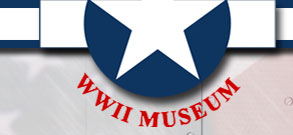
|
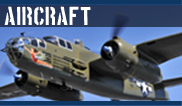 return
to return
to |
 
|
|
A Brief History
"Scat III" is a Lockheed P-38L
"Lightning". Originally built in
1945, she was never deployed and
survived the war without ever seeing
combat service. She was
purchased from war assets
administration, Altus, OK by James
L. Harp of Aurora, IL in July, 1946,
then went on to fly as Bendix racer
#95 until 1955. She changed hands
several times. Then during a
restoration completed in 1995 she
was fitted with the "E" model nose,
which was the 4 - .50 cal machine
gun and one 20mm cannon
configuration for fighter combat
duty during WWII.
She was flown as "Marge", Richard
Bong's aircraft from 1995 until Ron
and Diane Fagen acquired the
aircraft in 2004. In 2015, the nose art was changed to Scat III to honor Robin Olds, one of the most successful fighter pilots.
Robin Olds attended West Point, became an All-American tackle and graduated in 1943. After pilot training, he went to England in May, 1944 as a P-38 pilot with the 434th Fighter Squadron and flew three missions over the beaches of Normandy on D-Day. Olds was a daring pilot and a natural leader. He quickly shot down five enemy fighters to become the 479th Fighter Group’s first ace and, at the young age of 22, was promoted to Major and became Squadron Commander. His unit converted to P-51s and he ended the war with 12 victories.
434th Fighter
Squadron
Activated on 15 October 1943 at Grand Central Air Terminal, near Long Beach, California. Equipped with the Lockheed P-38F Lightning, trained for combat and served as an air defense organization for the west coast as part of IV Fighter Command.
Even though the defense of the US west coast initially took priority, it was decided to deploy Lightning squadrons to Britain for heavy bomber escort duty. The squadron was reassigned to RAF Wattisham, England, April–May 1944, and assigned to VIII Fighter Command, Eighth Air Force.
From England, the squadron escorted heavy bombers during operations against targets on the Continent, strafed targets of opportunity, and flew fighter-bomber, counter-air, and area-patrol missions. Engaged primarily in B-17/B-24 escort activities and fighter sweeps until the Normandy invasion in June 1944.
Patrolled the beachhead during the invasion. Strafed and dive-bombed troops, bridges, locomotives, railway cars, barges, vehicles, airfields, gun emplacements, flak towers, ammunition dumps, power stations, and radar sites while on escort or fighter-bomber missions as the Allies drove across France during the summer and fall of 1944. The unit flew area patrols to support the breakthrough at Saint-Lô in July and the airborne attack on the Netherlands in September. The unit continued escort and fighter-bomber activities from October to mid-December 1944. It converted to P-51s between September 10 and October 1, using both types on missions until conversion was completed.
Participated in the Battle of the Bulge (December 1944 – January 1945) by escorting bombers to and from targets in the battle area and by strafing transportation targets while on escort duty. From February to April 1945 it continued to fly escort missions, but also provided area patrols to support the airborne attack across the Rhine in March.
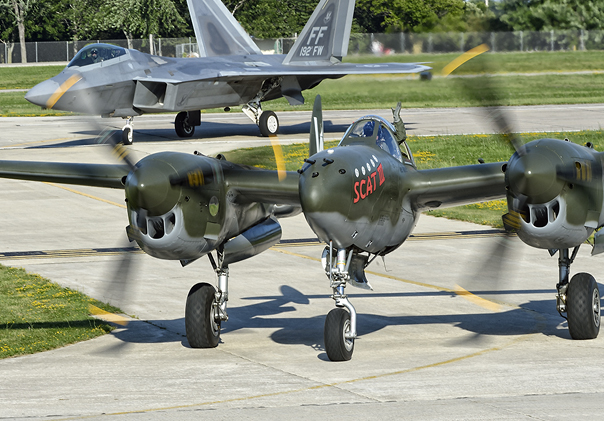
|
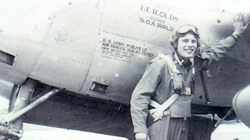
Lieutenant Olds next to his P-38
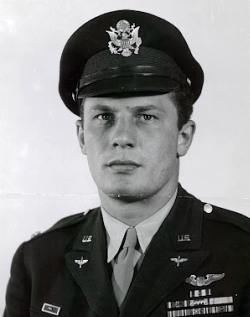
Robin Olds during WWII
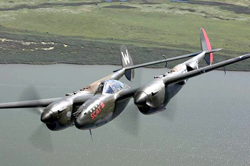
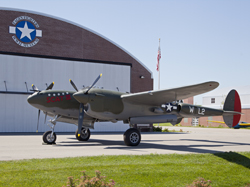 |
Specifications
Engines:
Two Allison
v-1710-111/113 ,
Liquid Cooled
Horsepower:
1425hp on Take-Off
1600hp at Max War
Emergency Setting
Weight:
14,100 lbs. Empty
17,700 lbs. Take-Off
Up to 21,600 lbs.
Combat
Dimensions:
Wingspan: 52 '
Length: 37' 10"
Height: 12' 10"
Propeller Diameters:
11' 6"
Armament:
4 x .50 Caliber
Machine Guns
1 x 20mm Cannon
Performance:
Maximum speed: 421
mph
Cruising speed: 275
mph
Range: 1,300 miles
Ceiling: 44,000 feet
|
|
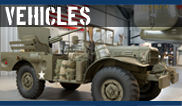

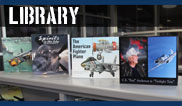

 |
|
|


